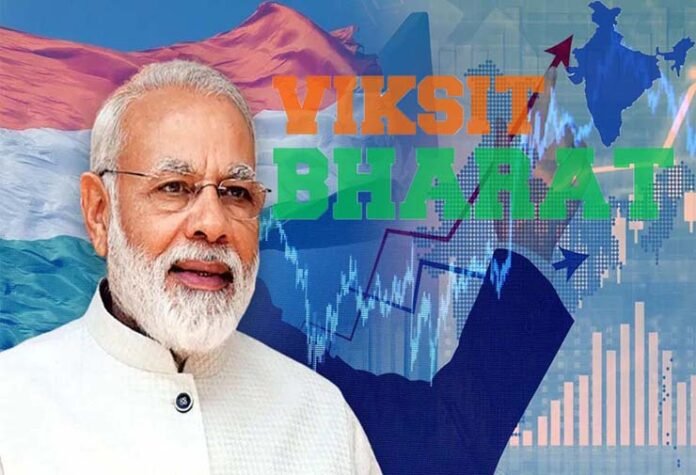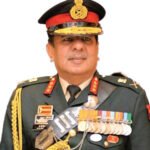Introduction: As India celebrates its 78th Independence Day, a vision is shaping its future with Viksit Bharat as the theme, to evolve and shape the nation’s trajectory. The struggle for India’s independence is not merely a historical narrative; it is a reflection of the indomitable human spirit, united in its pursuit of freedom and justice. It demonstrated that a determined population, driven by a shared vision, can overcome seemingly insurmountable odds and that India is a land of boundless possibilities. Our freedom fighters dreamt of not only a free India but an India whose idea was woven in the tapestry of unity in diversity, secularism, inclusivity and tolerance, democratic governance, cultural heritage, social justice, and economic progress as the identity of Bharat, in the spirit of Viksit Bharat. A nation that stands tall on the global stage, not just because of its size, but because of its values and people.
India on the Global Stage
India has progressed from a rule taker to a rule shaper, and from being a spectator to a major player in the global arena. India appears to be crafting a comprehensive strategy on multiple fronts. In foreign policy, India provided free COVID-19 vaccines to 101 countries, showcasing its commitment to global health. Balancing self-interest with multipolarity, India skilfully engages with the West, China, and Russia on its own terms. On the narrative front, India has pushed back against Canada on Khalistan terrorism and Europe on purchasing Russian oil. In defence, India maintains a zero-tolerance stance against Pakistan’s use of terrorism as state policy and firmly stands up to China’s territorial and technological incursions. Economically, India’s high and sustained growth has led to free trade agreement negotiations with numerous countries. Additionally, the government is focusing on clean energy and securing critical minerals to ensure sustainable resource management.
The global economic arena is witnessing a change, with China’s slowdown and Western nations viewing it as a rival rather than a partner. India on the other hand is emerging as the major growth driver. India’s stock market soaring, foreign investments are surging, and businesses expanding, reflecting confidence in India’s economic potential. Despite these positive trends, India’s $3.94 trillion economy remains much paler than China’s $18.5 trillion and the US $28.78 trillion economy in 2024.
Our freedom fighters dreamt of an India woven in the tapestry of unity in diversity, secularism, inclusivity and tolerance, democratic governance, cultural heritage, social justice, and economic progress as the spirit of Viksit Bharat
Challenges of Low Per Capita Income
The recent World Bank report projected India will take 75 years to reach a per capita income that is only one-quarter of the current level in the United States. This slow progress is due to the dominance of small firms and the sluggish growth of larger ones, compounded by regulatory constraints and global economic conditions. The World Development Report 2024 highlights the need for India to revise its policies to focus on investment-led growth and a balanced approach to taxation, innovation, and infrastructure.
With a current per capita income of $2,732, India ranks 136th globally, and the IMF projects it will rise to $3,720 by 2028, making it unlikely to achieve upper-middle-income status by the decade’s end. To reach high-income status by 2047, India’s per capita income must exceed $21,664, requiring a nominal growth rate of 9.1 per cent annually. This ambitious goal demands industrialisation, increased external trade, manufacturing expansion, investment boosts, reduced logistics costs, enhanced labour skills, and significant R&D investment. Achieving the dream of a prosperous India most importantly requires addressing the challenges to the internal and external security domains.
Addressing Challenges and Realising Potential
Despite a positive trajectory, India faces several challenges to make its dream of Viksit Bharat a reality. The country’s manufacturing sector accounted for only 15.8 per cent of GDP in 2023, compared to 26.4 per cent in China. To achieve this goal of a 25 per cent share in manufacturing, India will need to grow its manufacturing sector at a pace that outstrips its GDP growth.
The World Development Report 2024 highlights the need for India to revise its policies to focus on investment-led growth and a balanced approach to taxation, innovation, and infrastructure
Another significant challenge is the skill gap in the labour force. While India boasts some of the brightest minds and top-tier educational institutions, the average level of human capital needs improvement. Addressing this disparity through targeted education and training cum skill development programmes will be essential for creating a competitive workforce.
Urban development and economic disparity are other areas where India needs substantial progress. The rural-urban divide of Bharat needs to be addressed. Building more cities, improving interconnectivity, and addressing issues such as traffic, housing, and water supply are critical for supporting the migration of workers from rural to urban areas. Developing well-functioning cities must provide the necessary infrastructure for businesses to thrive and create jobs.
As India progresses towards the vision of Viksit Bharat, fostering a national citizen security culture becomes a collective responsibility. “Chaukas Bharat – Suraksit Bharat – Viksit Bharat” must be the chorus. Nurturing a culture of security and solidarity will help in creating safer and more inclusive societies. Initiatives in this regard by the Central Association of Private Security (CAPSI) on ‘National Citizens Security Culture’ and building an ‘Integrated Citizens Security Grid’ architecture must find both support and collaboration.
To reach high-income status by 2047, India’s per capita income must exceed $21,664, requiring a nominal growth rate of 9.1 per cent annually
Competition from China
China is a dominant global power, and India must strategically plan its engagement with its neighbour for the 21st century. Four major areas of potential competition include economic rivalry, resource and energy security, territorial disputes, and geopolitical influence. To counter China’s dominance, India should bolster its military defences, adopt robust economic and industrial policies, secure internal resources, enhance regional diplomacy, and leverage its soft power. A consistent, long-term vision is essential for India to navigate this complex relationship.
India’s Grand Strategy and Its Global Aspirations
India’s GDP is projected to reach $10 trillion by 2032 and $30 trillion by 2047. India’s rise is underpinned by its rich cultural ethos, economic trajectory, and focus on inclusivity. As India navigates its rapid economic growth and increasing geopolitical relevance, its grand strategy must integrate ancient wisdom with modern realities, promoting security, economic prosperity, and global cooperation. India’s vision, rooted in the principle of ‘Vasudhaiva Kutumbakam’ (the world is one family), seeks to redefine international relations based on equality and unity. By focusing on time-bound goals, security, economic empowerment, and addressing inequalities, India can emerge as a stable anchor nation in a world of strife. This comprehensive approach will secure India’s future while contributing to a more equitable and harmonious global order.
Navigating contemporary challenges requires countering disinformation, leveraging private-sector partnerships, and building national consensus
Navigating contemporary challenges requires countering disinformation, leveraging private-sector partnerships, and building national consensus. India’s historical journey from a colonised nation to a global player involves managing relations with China, the US, and Russia. Rooted in historical aspirations and current ambitions, India’s grand strategy must leverage time, security, economic growth, and global unity to navigate the 21st century and beyond, positioning itself as a leader in creating a secure and sustainable world as a ‘Vishwa Mitra’ in the spirit of ‘One World, One Family, One Future’.
Conclusion
India’s journey to becoming the world’s leading growth engine is fraught with challenges but filled with immense potential and opportunities. By focusing on infrastructure development, expanding workforce skills and participation, urban development, and attracting manufacturing jobs, investing in knowledge cum skill domain, India can position itself as the preferred destination for global businesses. However, sustained efforts to strengthen its external and internal security domains, targeted reforms, and strategic investments will be essential to realise this ambitious goal.
–The author a PVSM, AVSM, VSM has had an illustrious career spanning nearly four decades. A distinguished Armoured Corps officer, he has served in various prestigious staff and command appointments including Commander Independent Armoured Brigade, ADG PP, GOC Armoured Division and GOC Strike 1. The officer retired as DG Mechanised Forces in December 2017 during which he was the architect to initiate process for reintroduction of Light Tank and Chairman on the study on C5ISR for Indian Army. Subsequently he was Consultant MoD/OFB from 2018 to 2020. He is also a reputed defence analyst, a motivational speaker and prolific writer on matters of military, defence technology and national security.The views expressed are personal and do not necessarily carry the views of Raksha Anirveda
The author, a PVSM, AVSM, VSM has had an illustrious career spanning nearly four decades. A distinguished Armoured Corps officer, he has served in various prestigious staff and command appointments including Commander Independent Armoured Brigade, ADG PP, GOC Armoured Division and GOC Strike 1. The officer retired as DG Mechanised Forces in December 2017 during which he was the architect to initiate process for reintroduction of Light Tank and Chairman on the study on C5ISR for Indian Army. Subsequently he was Consultant MoD/OFB from 2018 to 2020. He is also a reputed defence analyst, a motivational speaker and prolific writer on matters of military, defence technology and national security. The views expressed are personal and do not necessarily carry the views of Raksha Anirveda






